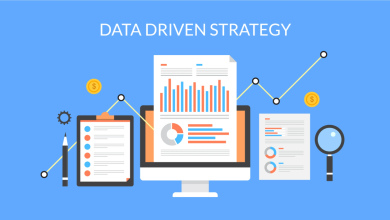
The digital landscape has transformed how businesses gather intelligence, monitor competitors, and optimize their online presence. Behind many successful data-driven strategies lies a powerful tool that most people never see: proxies. More specifically, reliable rotating residential proxies have become essential infrastructure for companies that need to collect large amounts of web data without triggering security measures or getting blocked.
Think of proxies as digital masks that hide your real internet identity. When you browse the web normally, websites can see your IP address, which reveals your location and internet service provider. But with a proxy, you appear to be browsing from a different location entirely. Residential proxies take this concept further by using real IP addresses assigned to actual homes and mobile devices, making your web traffic look completely natural to target websites.
The rotating aspect adds another layer of sophistication. Instead of using the same IP address repeatedly, these systems automatically switch between thousands or even millions of different residential addresses. This rotation happens seamlessly, often changing IPs with each new request or at timed intervals. The result is web scraping and data collection that flies under the radar of even the most sophisticated anti-bot systems.
Why Businesses Need Proxy Technology
Modern websites have become increasingly defensive about automated traffic. They deploy sophisticated detection systems that can identify and block bots, scrapers, and other automated tools. These defenses exist for good reasons – they protect against malicious attacks, prevent server overload, and preserve bandwidth for human users. However, they also create significant challenges for legitimate business activities that require large-scale data collection.
Consider a company that needs to monitor competitor pricing across multiple e-commerce platforms. Checking thousands of products manually would take weeks and cost a fortune in labor. Automated tools can complete the same task in hours, but websites often block these requests after detecting unusual traffic patterns. This is where reliable rotating residential proxies become invaluable – they make automated requests appear to come from regular consumers browsing from their homes.
The same principle applies to SEO monitoring, market research, ad verification, and countless other business intelligence activities. Without proxy technology, these essential business functions become either impossible or prohibitively expensive to perform at scale.
SEO Applications and Search Engine Intelligence
Search engine optimization professionals face unique challenges when trying to gather ranking data and monitor SERP changes. Search engines personalize results based on location, search history, and device type. This personalization makes it difficult to see how a website truly performs across different geographic markets and user segments.
Reliable rotating residential proxies solve this problem by allowing SEO professionals to conduct searches as if they were real users in specific locations. A marketing team in New York can see exactly how their website ranks for key terms when searched by users in Los Angeles, Miami, or Denver. This geographic insight proves crucial for local SEO strategies and national campaign optimization.
The rotation feature prevents search engines from recognizing repeated queries from the same source. This protection allows SEO teams to conduct comprehensive keyword research, track ranking fluctuations over time, and monitor competitor positions without triggering rate limits or skewed results.
Beyond basic ranking checks, advanced SEO applications include monitoring featured snippets, local pack results, and advertising competition across different markets. These insights help businesses optimize their content strategy and identify opportunities in underserved geographic areas.
Data Collection at Enterprise Scale
Web scraping for business intelligence has evolved into a sophisticated discipline requiring robust technical infrastructure. Companies need to collect product information, pricing data, customer reviews, social media sentiment, and competitive intelligence from hundreds or thousands of websites. This scale of data collection pushes far beyond what manual research could ever accomplish.
The challenge lies in doing this collection responsibly and effectively. Websites implement rate limiting, IP blocking, and bot detection specifically to prevent automated data harvesting. Reliable rotating residential proxies provide the solution by distributing requests across a vast network of real residential IP addresses.
This distribution serves multiple purposes. First, it prevents any single IP address from being overwhelmed with requests, which would trigger blocking mechanisms. Second, the residential nature of the IPs makes the traffic appear legitimate to target websites. Third, the geographic diversity of residential proxies allows data collection from region-specific websites and services that might block traffic from data centers.
Enterprise data collection operations often require specialized proxy features like session persistence, custom rotation schedules, and geographic targeting. These capabilities ensure that complex multi-step processes can complete successfully while maintaining the appearance of organic user behavior.
Market Research and Competitive Intelligence
Understanding market dynamics requires access to vast amounts of publicly available information scattered across the internet. Market researchers need to track pricing trends, monitor product availability, analyze customer sentiment, and study competitive strategies. This research forms the foundation for strategic business decisions worth millions of dollars.
Traditional market research methods often prove too slow and expensive for today’s fast-moving markets. By the time manual research provides insights, market conditions may have already shifted. Automated data collection using reliable rotating residential proxies enables real-time market intelligence that keeps pace with business needs.
Consider a retail company launching a new product category. They need to understand competitor pricing strategies, identify market gaps, monitor customer feedback on similar products, and track promotional activities across multiple channels. Manual research would take months and provide only a snapshot in time. Automated collection through residential proxies can gather comprehensive data continuously, providing dynamic insights that inform pricing, positioning, and marketing strategies.
The residential aspect proves particularly important for market research because many e-commerce and social media platforms show different content to users in different locations. A proxy network allows researchers to see pricing and promotions exactly as customers would in specific markets, revealing regional strategies and opportunities.
Technical Considerations and Best Practices
Implementing proxy technology effectively requires understanding several technical factors. Reliability stands as the most critical consideration – business intelligence operations cannot afford frequent downtime or connection failures. Quality proxy providers maintain vast networks with multiple redundancy layers and real-time monitoring to ensure consistent availability.
Speed represents another crucial factor. Data collection operations often involve processing thousands or millions of requests, making response time a significant concern. The best residential proxy networks optimize routing and maintain high-quality connections to minimize latency while preserving the residential appearance of traffic.
Geographic coverage affects the scope of possible data collection activities. Comprehensive market research might require IP addresses from dozens of countries and hundreds of cities. This diversity allows businesses to understand global markets and regional variations in pricing, product availability, and customer behavior.
Rotation strategies require careful configuration to balance effectiveness with efficiency. Too frequent rotation might slow operations unnecessarily, while insufficient rotation risks detection and blocking. The optimal approach depends on target websites, data collection volume, and specific use case requirements.
Overall Reflection
Reliable rotating residential proxies have become essential infrastructure for data-driven businesses operating in competitive digital markets. They enable SEO professionals to gather accurate ranking intelligence, allow enterprises to collect market data at unprecedented scale, and provide researchers with real-time insights into competitive dynamics.
The technology continues evolving as websites develop more sophisticated detection methods and businesses require more nuanced data collection capabilities. Success in this environment requires choosing proxy providers that invest in network quality, geographic diversity, and technical innovation.
For businesses ready to leverage these capabilities, the key lies in understanding specific requirements and matching them with appropriate proxy features. Whether supporting SEO campaigns, powering competitive intelligence, or enabling comprehensive market research, the right proxy infrastructure transforms how companies understand and respond to their digital environment.
The companies that master these tools gain significant advantages in market understanding, competitive positioning, and strategic decision-making. As digital markets become increasingly complex and fast-moving, reliable rotating residential proxies represent not just a technical tool, but a strategic necessity for business success.





